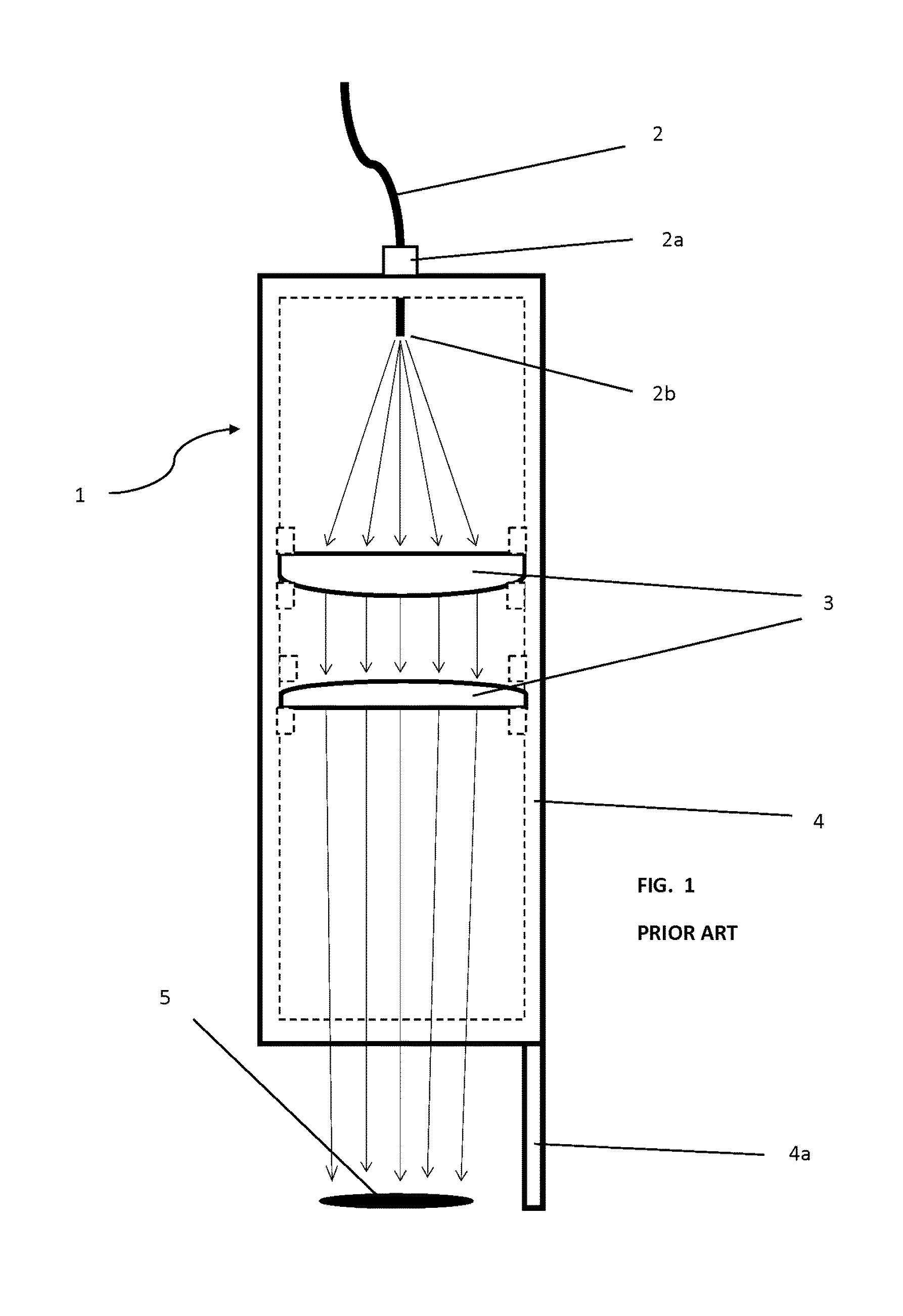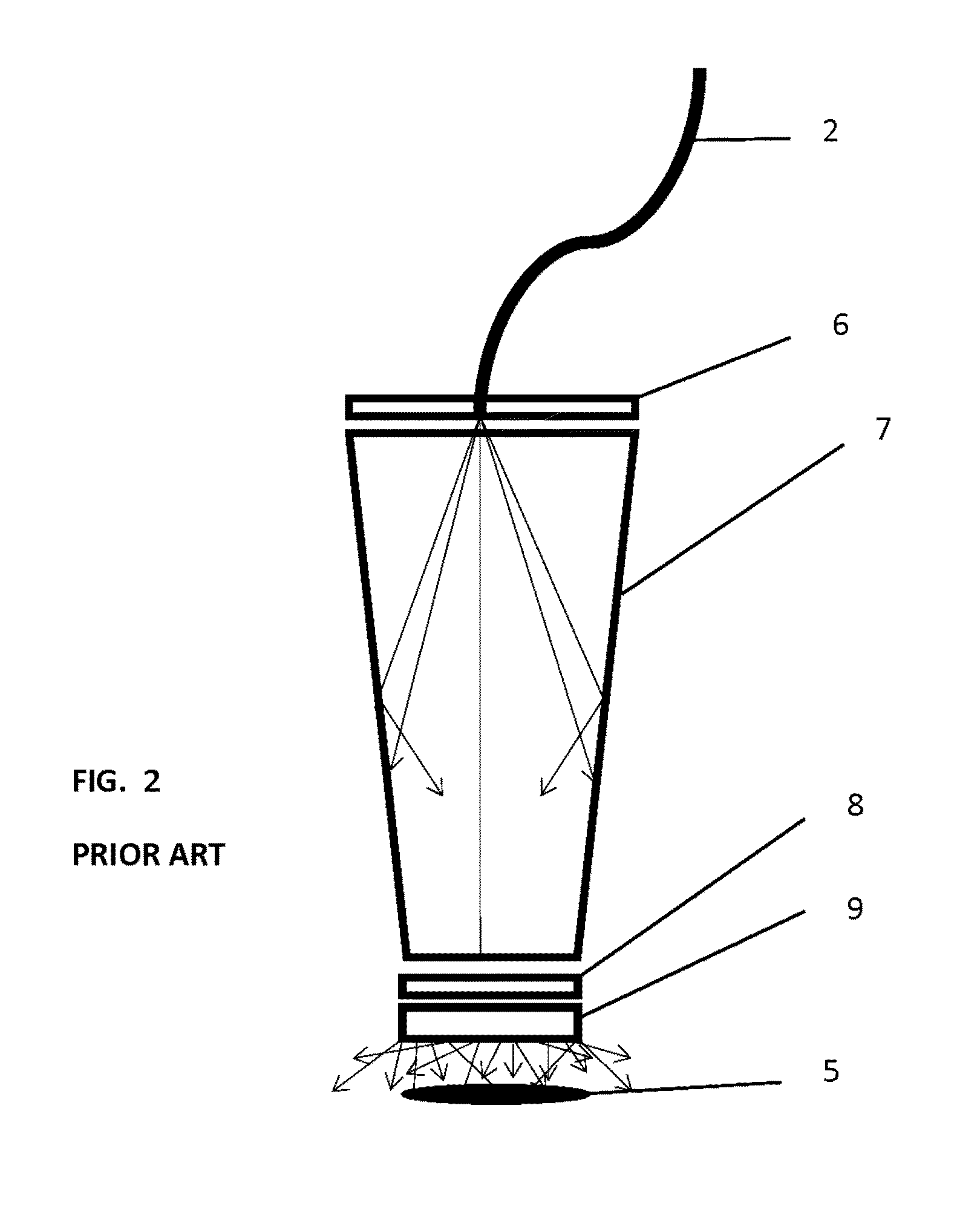Low Profile Apparatus and Method for Phototherapy
- Summary
- Abstract
- Description
- Claims
- Application Information
AI Technical Summary
Benefits of technology
Problems solved by technology
Method used
Image
Examples
first embodiment
[0093]FIGS. 3A and 3B are schematic depictions of a simple first embodiment of the device of the invention.
[0094]FIG. 3A shows the circular contact surface (40b) of the optical assembly. The contact surface (40b) is flush with the edge surface (30e) of the device housing (30). An optical fiber (10) is attached at or near its light-emitting distal end to the housing (30) with a connector (10a). The proximal end of the optical fiber is attached to a laser or other light source (not shown).
[0095]FIG. 3B is a schematic cross-section depiction of the housing and optical assembly of this embodiment. Inside the housing (30) is a light guide plate (40) with proximal surface (40a), and distal or contact surface (40b). The housing (30) has an opening (30a) for entry of light from the optical fiber (10). The opening (30a) is positioned so that the output of the optical fiber is substantially transmitted to the light guide plate (40) through lateral input surface (40c) of said light guide plate...
second embodiment
[0110]FIGS. 5A and 5B are a schematic depiction of an embodiment of the invention that includes active cooling capability. FIG. 5A shows a circular light-emitting distal surface (60b) of a contact window. The distal surface (60b) is flush with the edge surface (30e) of the device housing (30). An optical fiber (10) is attached at or near its light-emitting distal end to the housing (30) with a connector (10a). The proximal end of the optical fiber is attached to a laser or other light source (not shown). The device also has inlet (20a) and outlet (20b) lines for flow of coolant fluid, connected to the housing (30) with inlet (20c) and outlet (20d) tubing connectors. The other ends of the coolant lines are connected to a cooling device (not shown). The cooling device may be a recirculating chiller with coolant fluid reservoir, or a cold air producing device.
[0111]FIG. 5B is a schematic cross-section depiction of the housing and optical assembly of this embodiment. Inside the housing ...
third embodiment
[0118]FIG. 6 is a schematic cross-section depiction of the housing and optical assembly of a third embodiment of the invention. As in the second embodiment, the third embodiment has active cooling capability, however the optical assembly has a minimal air gap between the light guide plate and a cooling layer window, to reduce scattering within the optical and thereby improve efficiency, compared to an optical assembly of the second embodiment.
[0119]Inside the housing (30) are a light guide plate (40), a cooling layer window (80), a cooling layer (50), and a contact window (60). The light guide plate (40) has a proximal surface (40a) and distal surface (40b). The housing (30) has an opening (30a) for entry of light from the optical fiber (10). The opening (30a) is positioned so that the output of the optical fiber is substantially transmitted to the light guide plate (40) through an input area (40c) on the lateral surface of said light guide plate. The openings of the housing for the...
PUM
 Login to View More
Login to View More Abstract
Description
Claims
Application Information
 Login to View More
Login to View More - R&D
- Intellectual Property
- Life Sciences
- Materials
- Tech Scout
- Unparalleled Data Quality
- Higher Quality Content
- 60% Fewer Hallucinations
Browse by: Latest US Patents, China's latest patents, Technical Efficacy Thesaurus, Application Domain, Technology Topic, Popular Technical Reports.
© 2025 PatSnap. All rights reserved.Legal|Privacy policy|Modern Slavery Act Transparency Statement|Sitemap|About US| Contact US: help@patsnap.com



